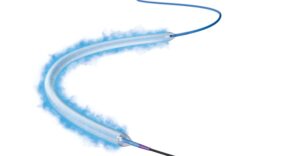New Data Debunks Death Risk Warnings on Paclitaxel-Coated Devices
Based on a new meta-analysis on paclitaxel-coated devices, FDA updated guidance that eliminates the requirement for device manufacturers to include specific warning language within device labeling.

Paclitaxel-coated devices got a bad rap five years ago after a meta-analysis showed an increased risk of death among patients who received a paclitaxel-coated balloon or paclitaxel-eluting stent.
After a two-day meeting of the Circulatory System Devices Panel in 2019, FDA concluded that there was a signal associated with an increase in mortality through five years of paclitaxel-coated devices as compared to non-coated devices. The agency was not, however, able to attribute this increased risk to a specific cause, and the committee was befuddled by data discrepancies. Tensions over paclitaxel devices eased in August 2019 when FDA provided some recommendations for doctors treating patients with paclitaxel balloons or stents.
This week, FDA pointed to new that further supports the use of paclitaxel-coated devices to treat peripheral arterial disease (PAD). The agency also updated guidance that eliminates the requirement for device manufacturers to include specific warning language within device labeling.
Device manufacturers collaborated in an updated meta-analysis, which included additional studies, more complete vital status information, and longer-term follow-up compared to prior studies. In these studies, patient follow-up ranged from two years to five years, with data from most studies available out to five years. FDA clinicians and statisticians reviewed the study data and concluded that the updated randomized clinical trial meta-analysis does not indicate that the use of paclitaxel-coated devices is associated with a late mortality risk.
FDA said it also reviewed additional analyses of the risk for late mortality, including the SWEDEPAD trial interim analysis, the VOYAGER PAD study, the German BARMER Health Insurance study, the U.S. Veterans Health Administration study, and the Medicare SAFE-PAD study. None of these studies, with mean or median follow-up ranging from 1.7 years to 3.5 years, found a risk for late mortality associated with paclitaxel-coated devices. Longer-term follow-up in several of these studies is ongoing, the agency noted.
Industry responds to paclitaxel-coated devices update
“We are pleased that, after continued analysis of data and collaboration among a broad set of stakeholders, the FDA has determined the large body of long-term clinical data do not support an excess mortality risk for paclitaxel-coated devices used to treat patients with PAD,” said Michael R. Jaff, MD, chief medical officer and vice president of Boston Scientific’s peripheral interventions business. “We remain dedicated to helping physicians provide the best care possible for their patients through access to life-changing technologies, including the Eluvia drug-eluting vascular stent system and the Ranger drug-coated balloon, both of which have demonstrated excellent safety profiles and very low revascularization rates in the hundreds of thousands of patients treated worldwide with these devices.”
Boston Scientific noted that the Ranger balloon (illustration shown at the top of this article), which is coated with paclitaxel, has a low therapeutic drug dose and proprietary coating designed to efficiently transfer the drug into the tissue. According to the company, this results in the highest primary patency rates from prior studies examining other peripheral drug-coated balloons.
The Eluvia drug-eluting stent, shown below in an illustration, which features sustained release of the lowest dose of paclitaxel for peripheral drug-eluting devices, is designed to re-open blocked arteries and restores blood flow while using a drug-polymer combination to prevent excessive tissue regrowth.

Eluvia has the highest primary patency and lowest revascularization rates among stents used to treat PAD in the superior femoral artery and has shown superiority in two randomized controlled comparative effectiveness trials, according to Boston Scientific.
European regulators temporarily halted CE mark reviews for new paclitaxel devices in February.
The original meta-analysis, which researchers published in December 2018, prompted European regulators to temporarily halt CE mark reviews for paclitaxel-coated devices. That decision created a delay for Eden Prairie, MN-based Surmodics, which had already submitted its SurVeil paclitaxel-coated balloon for CE mark review. The company finally got a CE mark for the device in June 2020, and also won FDA approval last month (three full years after CE mark).
Article source:Medical Device and Diagnostic Industry









